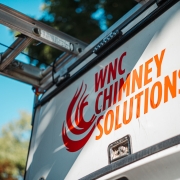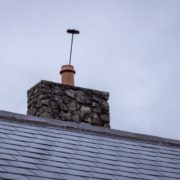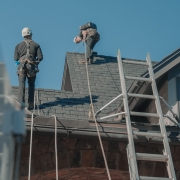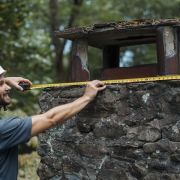How a Chimney Chase Cover Protects Your Home from the Elements
Your chimney stands tall, catching wind, rain, snow, and heat every day. It’s easy to forget about the top, but that’s where real trouble can start. The chimney chase cover may look like just a cap, but it’s the guard at the gate.
Without one, water seeps in, rust spreads, animals sneak through, and your home takes the hit. This article explains what a chimney chase cover does, how it holds back damage, and why letting it break down is like leaving your front door wide open during a storm.
What Is a Chimney Chase Cover?
A chimney chase cover sits at the top of a chimney chase, usually made of wood or metal framing around the chimney. It acts like a lid and is built to fit over the chase, with a slight slope that lets water roll off. It keeps the flue opening clear, but shields everything else.
These covers are mostly made from galvanized steel, aluminum, or stainless steel. Some older homes have covers that rust quickly, while others have newer models that last longer. But no matter the type, if the cover fails, it brings problems. And those problems usually start with moisture.
Why Moisture Is a Problem
Water finds the smallest crack, drips slowly, and keeps going unnoticed for a while. Chimneys aren’t waterproof, and water causes damage fast. It can rot wood, rust metal, and cause mold. Inside the chimney, water can mix with soot and create a thick mess that clogs vents and stains ceilings.
Moisture also weakens bricks and causes the mortar between them to crumble. Even small leaks from a broken chase cover can cause thousands in repair bills. That’s why a working cover isn’t a maybe, it’s a must.
How a Chimney Chase Cover Protects Your Home From Various Elements
The biggest job of a chase cover is keeping out rain and snow. It works like a roof. The cover sits over the opening, and water runs off the sides instead of going into the chase box. Many covers have angled edges that push water away even faster. Here are some other elements that it protects you from:
Protecting Against Animals and Debris
Raccoons, squirrels, and birds love warm chimneys. A broken or missing chase cover is a golden invitation. Once they’re in, they bring messes, such as nests, droppings, and sometimes babies. Worse, nests can block the flue, leading to smoke backup or chimney fires.
Leaves, twigs, and pine needles can also blow into the chimney if the cover has a hole or is loose. Over time, this debris piles up, traps moisture, and starts to rot. Before you know it, you’ve got blockages and strange smells drifting through your house. A solid chase cover with a mesh cap helps keep all that out.
Stopping Rust and Stains Before They Spread
Rust is common on older galvanized steel covers. Once rust shows up, it spreads. Orange stains start to run down the sides of the chimney. Over time, the rust eats through the metal. This leads to holes and holes mean water.
Stainless steel and aluminum resist rust better, but they still need checks. If you see rust stains, don’t ignore them. They’re the chimney’s way of waving a red flag.
Once the inside framing gets wet, nails loosen, wood warps, and screws can pop. What starts as a spot of rust can lead to a crooked or collapsed cover in a season.
Preventing Heat Loss and Draft Issues
Warm air wants to rise. If the chase cover isn’t sealed tight, heat from your house can escape through the chimney. That loss isn’t just bad for your energy bill, it messes with airflow, too.
Chimneys need a steady draft to pull smoke and gases out. When the air leaks around the top, that draft gets choppy. The fire burns cooler or smokes more. Sometimes, air even gets pulled back down into your home. A tight-fitting chase cover helps keep the balance right and the heat inside.
Extending the Life of the Chimney Structure
Your chimney is tied into your home. Rooflines, siding, framing, and ceilings can all be affected by what happens at the top of the chimney. A solid chase cover protects more than just the flue pipe. It shields the whole upper area from wear and tear.
Brickwork stays drier and framing doesn’t sag. Furthermore, it ensures the mortar doesn’t crumble. All in all, everything lasts longer. If you’re hoping to skip repairs for as long as possible, this one part does a lot of heavy lifting.
What Materials Work Best for Chimney Chase Covers?
The best pick depends on your budget and how long you want it to last. Stainless steel is a smart choice for most people who want fewer headaches later. Let’s break down the most common materials:
- Galvanized Steel – Cheapest upfront, but rusts fast. It often needs replacing in under 10 years.
- Aluminum – Rust-resistant and lightweight. However, it is not as strong under heavy snow or falling branches.
- Copper – It is rare and expensive. While it looks nice, the costs are more than what most people are ready to spend.
- Stainless Steel – Strong, rust-proof, and long-lasting. Costs more than steel but worth it.
Why Replacing a Bad Cover Pays Off
Putting off a broken cover means trouble builds up. Mold, rot, and rust don’t pause while you wait. Replacing a rusted cover now costs way less than fixing chimney leaks later. A new chase cover also makes your chimney look cleaner. Curb appeal goes up, even if it’s just a small detail. That’s a win all around.
DIY vs. Professional Help
Some people try to patch their chase cover with caulk or sealant. That’s a short-term fix and it rarely holds up against wind or rain. A professional can check the structure, measure the chase box, and install the right cover with the correct slope and seal.
Conclusion
The chimney chase cover may be out of sight, but it shouldn’t be out of mind. It stands guard through storms, heat, and wildlife, keeping your home dry and safe. If you need a chimney chase cover installed or replaced, then Call WNC Chimney today for expert help that keeps the elements outside, where they belong.











